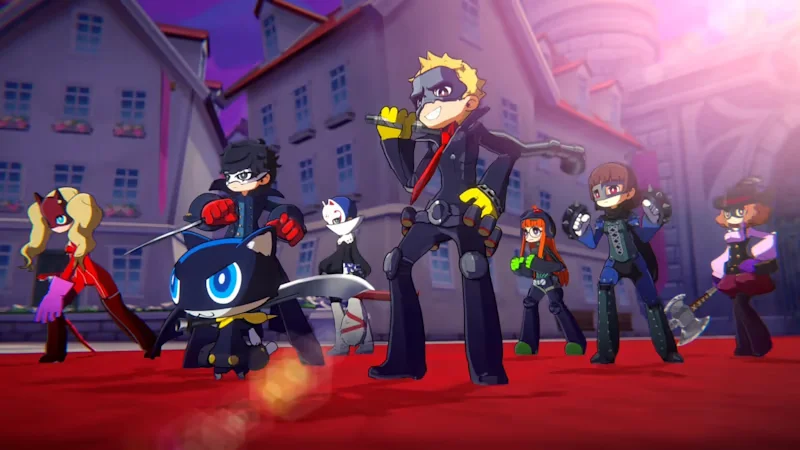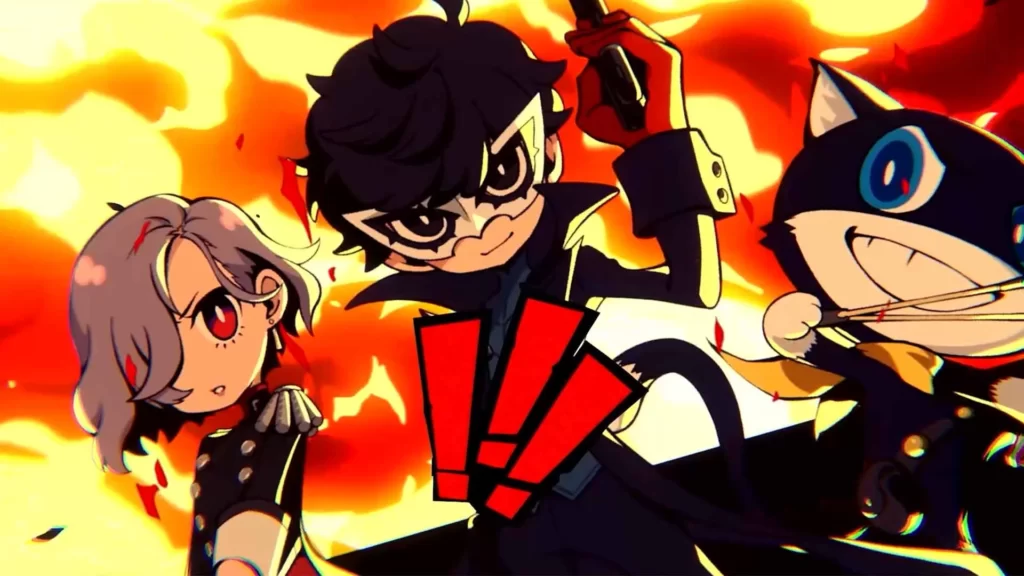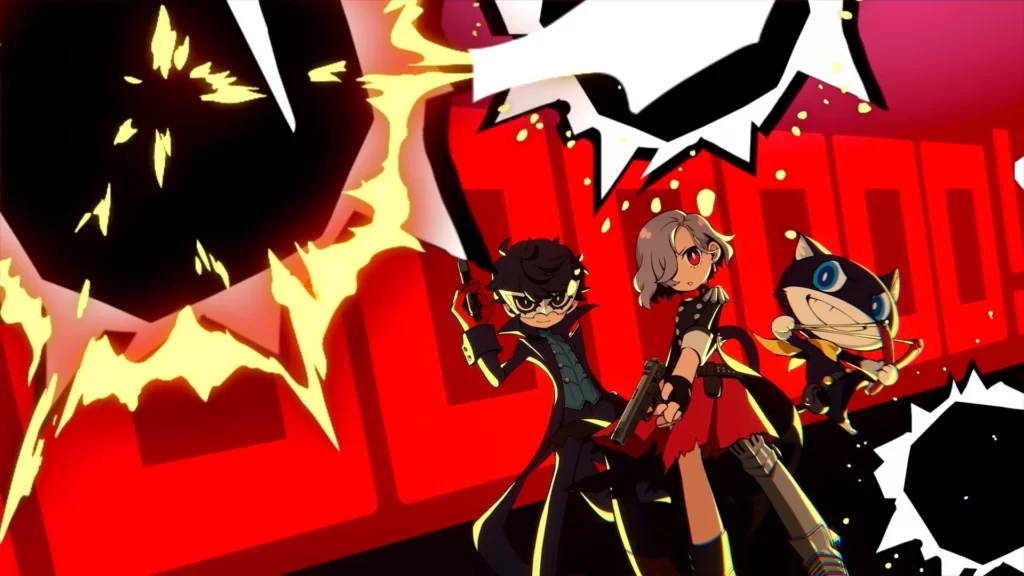Persona 5 Tactica ventures into a distinct realm, offering a fresh narrative featuring the Phantom Thieves and introducing some new characters. While Persona 5 gained immense popularity in the RPG genre, Atlus continued to expand the Persona universe with releases like Persona 5 Dancing in Starlight, Persona 5 Royal, Persona 5 Strikers, Persona Q2: New Cinema Labyrinth, and finally Persona 5 Tactica. As the series evolved, Persona 5 Tactica emerged with the challenge of sustaining the franchise’s appeal. However, opinions on its success in continuing the Persona phenomenon may diverge among fans.
Unlike its predecessors, Persona 5 Tactica unfolds concurrently with Persona 5 but pursues an entirely distinct storyline. Opting for a new narrative direction set in a locale both recognizable and unfamiliar to Persona aficionados injects a touch of novelty into the game’s well-established themes. Nevertheless, these novel story elements may prove perplexing to newcomers who choose Tactica as their inaugural Persona experience. While the beloved Phantom Thieves make their return, alongside a few new additions to spice up the ensemble, they struggle to stand out in the midst of the already diverse character cast.

The focal point shifts to the game’s new mystery, offering a blend of novelty and familiarity as players delve into uncovering the truth about the world. Despite echoing some of the questions posed in Persona 5, Tactica introduces sufficient intrigue to captivate users and motivate them to seek answers.
Players must grapple with the potential impact of Persona fatigue on their gaming experience. Persona 5 Tactica introduces innovative systems, yet not everyone may appreciate the constraints imposed by these changes. The shift to a small grid map, featuring variations in height and distances that hold tactical significance, provides a refreshing twist to the conventional combat mode. While maintaining a turn-based structure that allows players to move and attack before enemies retaliate, the emphasis on strategic positioning and the interplay of melee and ranged attacks adds a layer of complexity. Notably, the height differentials introduce interesting dynamics, restricting attacks on enemies directly above or below the character, even in adjacent grid squares. In contrast to games like XCOM 2, Persona 5 Tactica imposes more stringent line-of-sight rules.

Despite the innovative combat dynamics, the game remains embedded in the Persona 5 universe. Long-time players might sense a degree of weariness with certain character personalities, with some feeling more amplified than in the standard Persona games. However, the franchise’s strength has always rested on its character ensemble. Fortunately, the introduction of a few new characters brings a more subdued presentation and antics. Yet, background extras tend to fade into obscurity until players delve deeper into the game.
With only three characters in the party this time, the game introduces a sense of restriction, but the freedom to move before finalizing a turn or executing an action adds a degree of flexibility. Given the compact size of some maps, the additional freedom proves advantageous. However, there appears to be a lack of depth in each character’s skill trees. Skill tree upgrades predominantly focus on enhancing basic skills, hit points, and spell points. The order in which skills are upgraded allows for some choice in building character skills compared to previous games, creating a paradoxical sense of both progress and regression. Changes, such as the transformation of the All-Out group attack into a Triple-Attack covering a triangular area between three characters, may initially feel unconventional but introduce a heightened complexity to combat.

Persona 5’s catchy music remains a highlight in Persona 5 Tactica, although it may slightly deviate in quality compared to its predecessor. The beats and sounds that define the Persona universe permeate the game, with the coffee house’s mellower tunes standing out. Voice acting, while a notch below Persona 5 Tactica standards, remains well-executed, contributing to engaging dialogue. The inclusion of numerous voice lines, particularly for new characters, adds to the overall immersive experience.
The game undergoes alterations in combat beyond the grid system. The ability to move around enemies seems like an attempt to incorporate an element from Persona 5 Strikers while retaining turn-based combat. This allows players to easily coordinate attacks on enemies but exposes characters to counter-attacks. The ebb and flow of combat swing between large advantages for players or enemies. Higher difficulty levels might introduce a sense of unfairness with enemies’ critical hits, potentially tilting the odds in their favor. However, players on easier difficulty settings initially feel formidable, although this perception may wane as the game progresses, introducing a variety of enemies and larger groups on the map. Interestingly, players might find success in completing missions by avoiding combat altogether, a somewhat peculiar achievement in a Persona game.

Enemy designs generally captivate, with the main antagonist, Lady Marie, standing out. Exuding authority and hinting at levels of insanity and wrath, Lady Marie presents a formidable boss who feels more conventional than ethereal, in contrast to some Persona 5 Tactica bosses. The voice acting for Lady Marie deserves acclaim for bringing the character to life, creating a daunting and memorable adversary. The English voice actress excels in crafting a new villain with a level of intimidation to rival the more extravagant scoundrels typically found in Persona.
A notable departure from the original Persona 5 Tactica is the unconventional method of acquiring personas. Instead of capturing personas in the standard manner, they are bestowed upon players after missions and quests. While players can still fuse personas to create new ones, the randomized acquisition may initially feel peculiar. Additionally, the introduction of various new skills and passive abilities, although seemingly inconsequential at first, can prove pivotal in turning the tide of challenging battles. The difficulty in obtaining new weapons, coupled with the game’s reluctance to provide ample money to players, emerges as a potential source of frustration amidst otherwise significant system changes.

Another major change manifests in the shift from a semi-realistic art style to a more chibi-like design, featuring diminutive feet and cute faces. This alteration imparts a younger appearance to the characters, with Lady Marie being the exception, designed to exude a larger-than-life presence. Player reactions to this stylistic shift may vary, as it represents a departure that could either resonate well or elicit mixed sentiments.
In essence, Persona 5 Tactica marks a departure from previous games, introducing an intriguing narrative and successfully capturing the essence of an Alice in Wonderland vibe. The enjoyment of players hinges on their reception of the characters’ new appearance and the game’s more confined spaces in combat, character skills, and personas. Despite the adjustments, Persona 5 Tactica weaves an enjoyable and engaging tale for those ready to join the Phantom Thieves once again.



